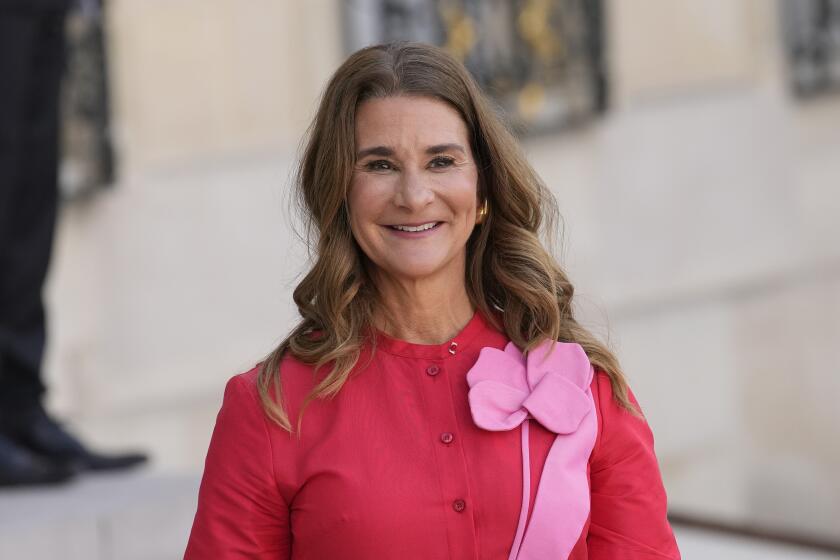VIEWPOINTS : What Should Campeau Do With the Federated Empire? : Retailing Experts Offer the New Owner Some Advice on Managing Stores as Diverse as Bloomingdale’s and Ralphs
C anadian developer Robert Campeau this month won a fierce two-month takeover battle for Federated Department Stores, reaching agreement on a $6.6-billion deal, the biggest non-oil merger ever in America. Campeau is getting a retailing empire including such names as Bloomingdale’s, Abraham & Straus, Ann Taylor, Burdines and Rich’s, along with Ralphs supermarkets in Southern California. To cover some of the expense, Campeau plans to sell $4.4 billion in Federated assets, and he already has agreed to unload Bullock’s-Bullocks Wilshire and I. Magnin, among other units. What else should Campeau do, now that he finally has the huge Federated organization? To get some opinions, free-lance writer Michele Lingre talked to retailing experts, and excerpts of the interviews follow:
Tom Tashjian, analyst with Seidler Amdec Securities in Los Angeles:
“What would I do with it? After honoring my commitments to sell some of the divisions, I would take the remaining department stores and swiftly move to consolidate their computer systems and all of their non-store operational functions--legal, accounting, real estate development, etc., so there would be a central core of operations probably situated in Cincinnati, (Federated’s headquarters city) where all of my sales and inventory information would feed into.
“The second step would be to assess the return on assets of each department store, see which ones are profitable and implement the programs necessary to enhance the profitability. Most likely that would mean eliminating less productive sales space, narrowing down the product mix.
“Ralphs probably has a payoff we are not yet seeing in profits, so I’d wait. I think I would be coaxed to sell off the less productive department stores, possibly some single store units in Texas and Florida.
“I would examine the real estate, particularly the downtown department store sites, think about developing that land into office buildings as well as retail centers because of the return-to-downtown interest we are seeing.
“Realizing I have a large debt payment to make every month, I would probably sell off most of the specialty divisions, such as Children’s Place and Main Street. They are probably more bother to grow and develop than they are worth in terms of return on investment.
“One other thing I would do is take the Bloomingdale’s franchise, select department stores in each one of the divisions I still held and consider turning one of those stores into a Bloomingdale’s store. The name has a very affluent franchise, something that I would like to expand globally, not only nationally. With the existing stores, I could probably do that pretty quickly.”
Robert M. Haft, president of Dart Group, Crown Books and Trak Auto:
“First, I would continue the divisional autonomy. Then, most importantly, I would institute a program to create incentives, that is, employee ownership and profit sharing. Third, I would begin a program of remodeling many stores I feel need an upgrading. And fourth, I would try to develop a stronger focus on the customers with truly improved merchandising, advertising and promotion.”
Carol Farmer, a New York retailing consultant:
“Nordstrom, everybody’s favorite company to talk about right now, has demonstrated that if you do respond to the consumer, you will be successful. Bob Morosky’s (Robert H. Morosky, who is to become president of Federated) challenge is to find a formula which will work equally well. I hope it is a different formula. Retailing needs some diversity.
“If I were Morosky, I would be interested in the energy I got from all the great merchants I inherited in the Federated acquisition. I would be worrying about whether or not my Allied (Allied Stores, which Campeau bought in 1986) people were going to dilute my Federated merchandising skills.
“Merchants and financial people have to stop thinking their navel is the center of the universe. Today the consumer is. Consumers need another department store chain consolidation like they need a hole in the head. We are now out of the realm of Financial Wonderland and into everyday retailing. That means selling merchandise to consumers and making them think that your store is the best place to buy it. Federated had that advantage at one point, it no longer does, and that advantage has to be built back into it.
“The consumer today is demanding service, and that is wonderful merchandise, fair and reliable pricing and a fast transaction. Those are all areas in which a lot of these companies could be dramatically improved. I don’t think it is consumer-responsive to offer gift wrap and have the boxes be three floors away, which is done in almost all department stores. It is not consumer-responsive to offer a liberal return policy, but not give you money back if that is what you want. There are hundreds of those things.
Al D. McCready, national retail trade director for Deloitte Haskins & Sells:
“It would be a mistake to stir the pot too much at Bloomingdale’s, because it is doing reasonably well. On the other hand, Abraham & Straus and Lazarus bring with them an opportunity to try and reclaim their previous position.
“Ralphs is a profitable operation, but Campeau has taken on a tremendous debt burden. I would have thought selling something like Ralphs, which could command a premium price, would have been one of the early moves. I am surprised to hear that Campeau is considering keeping it.”
James F. Nordstrom, president of Nordstrom stores:
“I wouldn’t have bought Federated. We’d rather open our own businesses from scratch. It just seems to me you end up in a lot of trouble if you are not careful, but Mr. Campeau did very well on his last purchase (Allied). He’ll have to figure out how to pay for all this. He’ll have to make some changes. I am sure there is going to be some cost cutting. It is easier to start a new business than to try and change an existing one. The merchandise is easy to change, the people are hard to change. I don’t know how I would do that.”






